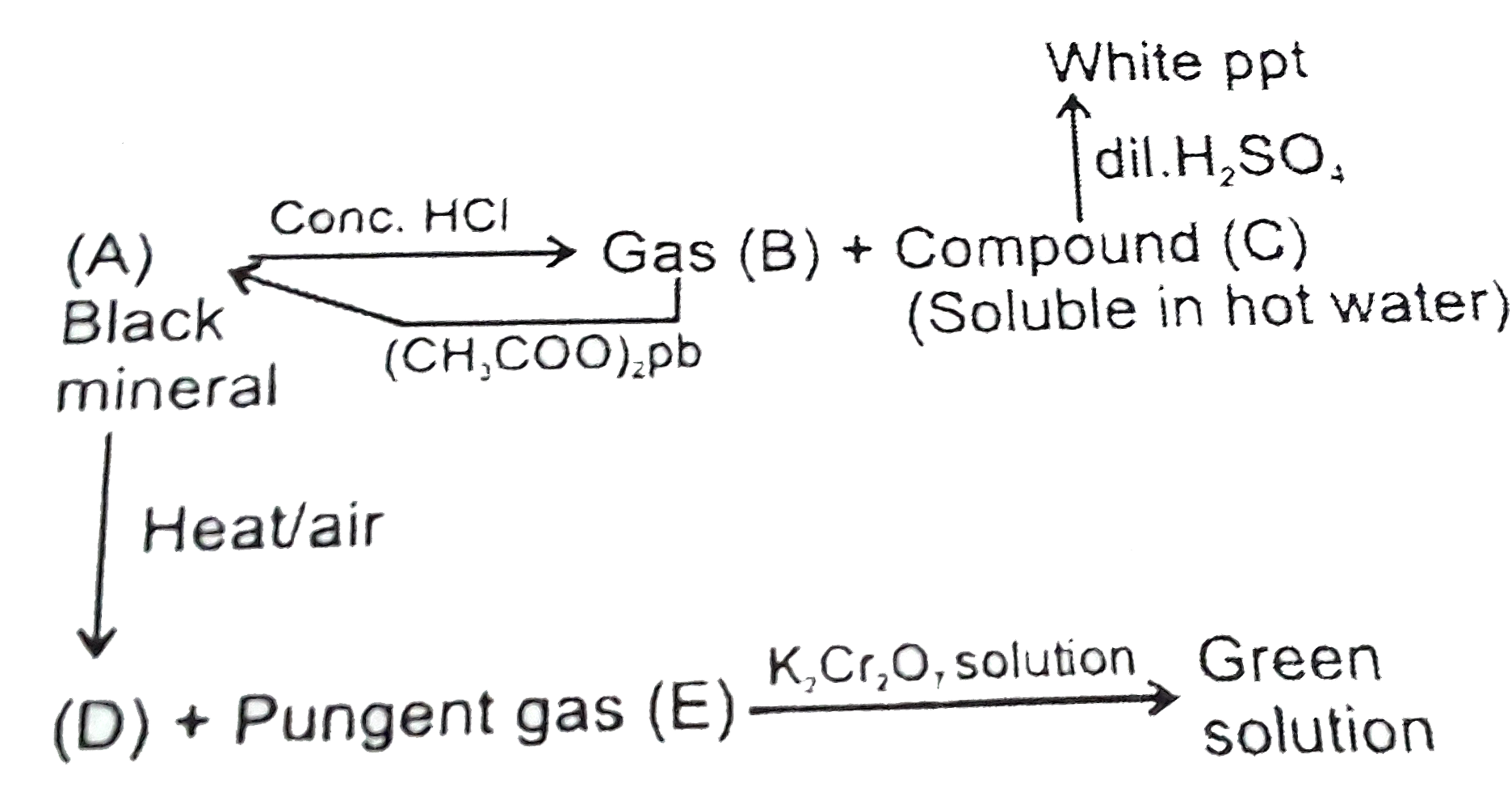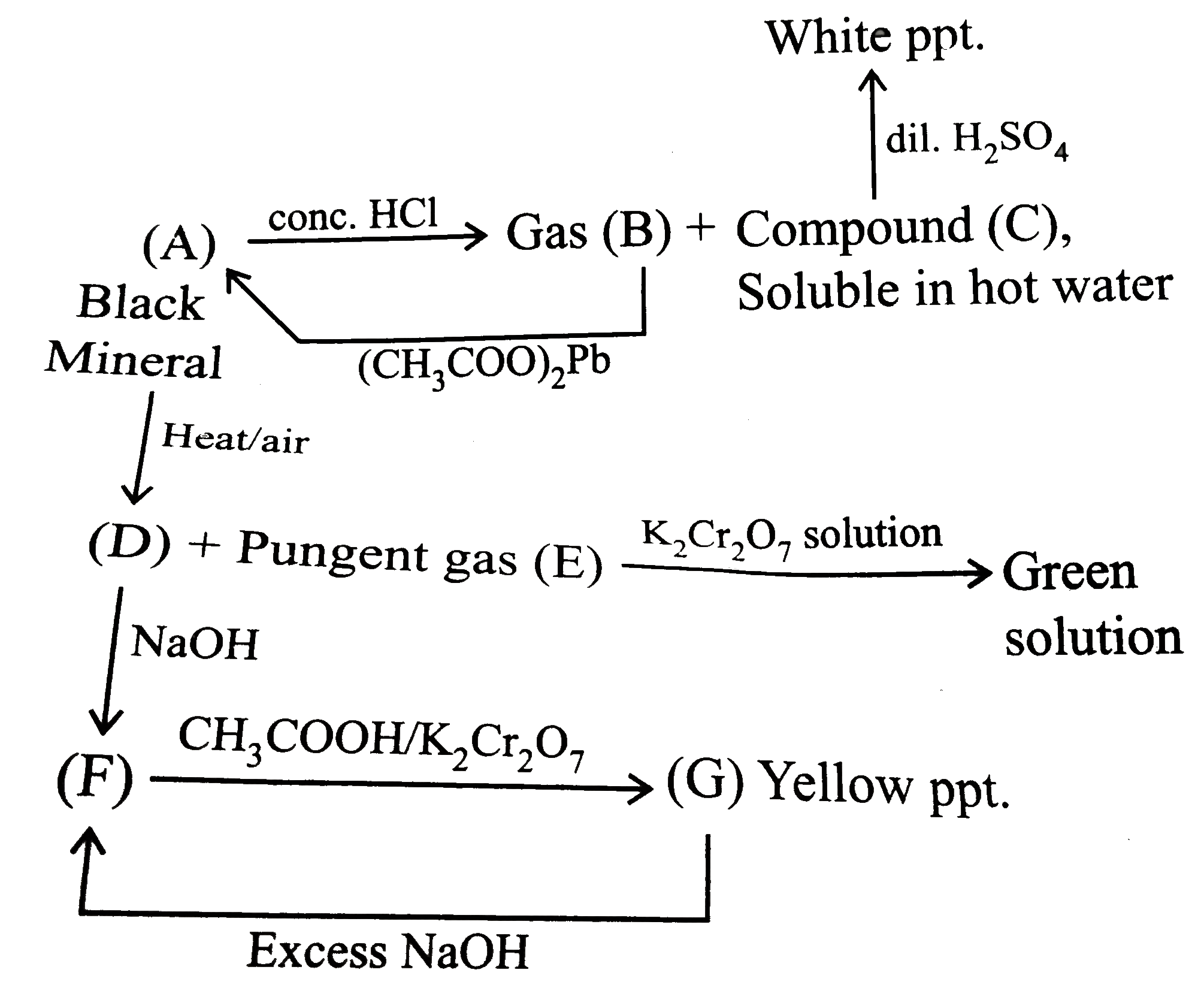ACalcination−−−−−−→CaO+MgO+(B)Colourless gas
When the colourless gas (B) is passed through lime water, initially a milky solution is obtained and on excess passage of gas (B) through the lime water, milkiness disappears.
(B) is.
CO2
SO2
CO
SO3
The correct Answer is:A
To solve the question step by step, we need to analyze the information given and apply our knowledge of chemistry.
Step 1: Identify Compound A
The question states that compound A, when calcined, produces calcium oxide (CaO) and magnesium oxide (MgO) along with a colorless gas (B). The process of calcination typically involves heating a substance to bring about thermal decomposition.
Hint: Think about common compounds that contain both calcium and magnesium carbonates.
Step 2: Determine the Composition of A
From the information provided, we can deduce that compound A is likely to be dolomite, which has the formula CaCO3·MgCO3. When dolomite is heated (calcined), it decomposes into calcium oxide, magnesium oxide, and carbon dioxide.
Hint: Look for a carbonate that contains both calcium and magnesium.
Step 3: Identify the Colorless Gas (B)
The colorless gas produced during the calcination of dolomite is carbon dioxide (CO2). This gas is known for its colorless and odorless properties.
Hint: Recall the products of thermal decomposition of carbonates.
Step 4: Reaction with Lime Water
When carbon dioxide is passed through lime water (a solution of calcium hydroxide, Ca(OH)2), it reacts to form calcium carbonate (CaCO3), which is insoluble in water and causes the solution to turn milky. This is the initial observation mentioned in the question.
Hint: Consider the reaction of CO2 with calcium hydroxide.
Step 5: Excess Passage of Gas (B)
With the excess passage of carbon dioxide through lime water, the milkiness disappears because calcium carbonate reacts with more CO2 to form calcium bicarbonate (Ca(HCO3)2), which is soluble in water.
Hint: Think about how the solubility of the products changes with varying amounts of CO2.
Conclusion
Based on the analysis above, the colorless gas (B) is identified as carbon dioxide (CO2).
Final Answer
(B) is carbon dioxide (CO2).
The question states that compound A, when calcined, produces calcium oxide (CaO) and magnesium oxide (MgO) along with a colorless gas (B). The process of calcination typically involves heating a substance to bring about thermal decomposition.
From the information provided, we can deduce that compound A is likely to be dolomite, which has the formula CaCO3·MgCO3. When dolomite is heated (calcined), it decomposes into calcium oxide, magnesium oxide, and carbon dioxide.
The colorless gas produced during the calcination of dolomite is carbon dioxide (CO2). This gas is known for its colorless and odorless properties.
When carbon dioxide is passed through lime water (a solution of calcium hydroxide, Ca(OH)2), it reacts to form calcium carbonate (CaCO3), which is insoluble in water and causes the solution to turn milky. This is the initial observation mentioned in the question.
With the excess passage of carbon dioxide through lime water, the milkiness disappears because calcium carbonate reacts with more CO2 to form calcium bicarbonate (Ca(HCO3)2), which is soluble in water.
Based on the analysis above, the colorless gas (B) is identified as carbon dioxide (CO2).
(B) is carbon dioxide (CO2).
Topper's Solved these Questions
- GENERAL PRINCIPLES AND PROCESS OF ISOLATION OF ELEMENTSBOOK - CENGAGE CHEMISTRY ENGLISHCHAPTER - GENERAL PRINCIPLES AND PROCESS OF ISOLATION OF ELEMENTSEXERCISE - Exs 1.1 (Subjective)
25 Videos
- GENERAL PRINCIPLES AND PROCESS OF ISOLATION OF ELEMENTSBOOK - CENGAGE CHEMISTRY ENGLISHCHAPTER - GENERAL PRINCIPLES AND PROCESS OF ISOLATION OF ELEMENTSEXERCISE - Exs 1.1 (Objective)
14 Videos
- GENERAL PRINCIPLES AND PROCESS OF ISOLATION OF ELEMENTSBOOK - CENGAGE CHEMISTRY ENGLISHCHAPTER - GENERAL PRINCIPLES AND PROCESS OF ISOLATION OF ELEMENTSEXERCISE - Archives (Subjective)
14 Videos
- ELECTROCHEMISTRYBOOK - CENGAGE CHEMISTRY ENGLISHCHAPTER - ELECTROCHEMISTRYEXERCISE - Archieves Subjective
35 Videos
- GRIGNARD REAGENTS AND ORGANOMETALLIC REAGENTSBOOK - CENGAGE CHEMISTRY ENGLISHCHAPTER - GRIGNARD REAGENTS AND ORGANOMETALLIC REAGENTSEXERCISE - Exercises Archives (Linked Comprehension)
1 Videos
Similar Questions
ACalcination−−−−−−→CaO+MgO+(B)Colourless gas
When the colourless gas (B) is passed through lime water, initially a milky solution is obtained and on excess passage of gas (B) through the lime water, milkiness disappears.
Lime water is.
View SolutionACalcination−−−−−−→CaO+MgO+(B)Colourless gas
When the colourless gas (B) is passed through lime water, initially a milky solution is obtained and on excess passage of gas (B) through the lime water, milkiness disappears.
Milkiness of lime water solution disappears due to the formation of :
View Solution
Knowledge Check
When CO2 is passed through lime water , the milkiness first formed is due to the formation of ………………….
Athe reversible reaction taking placeBformation of water soluble calcium bicarbonateChuge amount of heat evolved during the reactionDformation of water soluble complex of calcium
ACalcination−−−−−−→CaO+MgO+(B)Colourless gas
When the colourless gas (B) is passed through lime water, initially a milky solution is obtained and on excess passage of gas (B) through the lime water, milkiness disappears.
Name of the product (A) is :
View SolutionWhat happens when fluorine gas is passed through water?
View SolutionThis gas turns lime water milky.
View SolutionWhat do you observe when
CO2 is passed through lime water first a little and then in excess.
View Solution
Gas (B) on passing through cadmium acetate solution will give :
View Solution
Gas (B) on passing through CaSO4 solution will give
View SolutionOn passing excess of CO2 in lime water, its milky appearance disappears because-
View Solution
